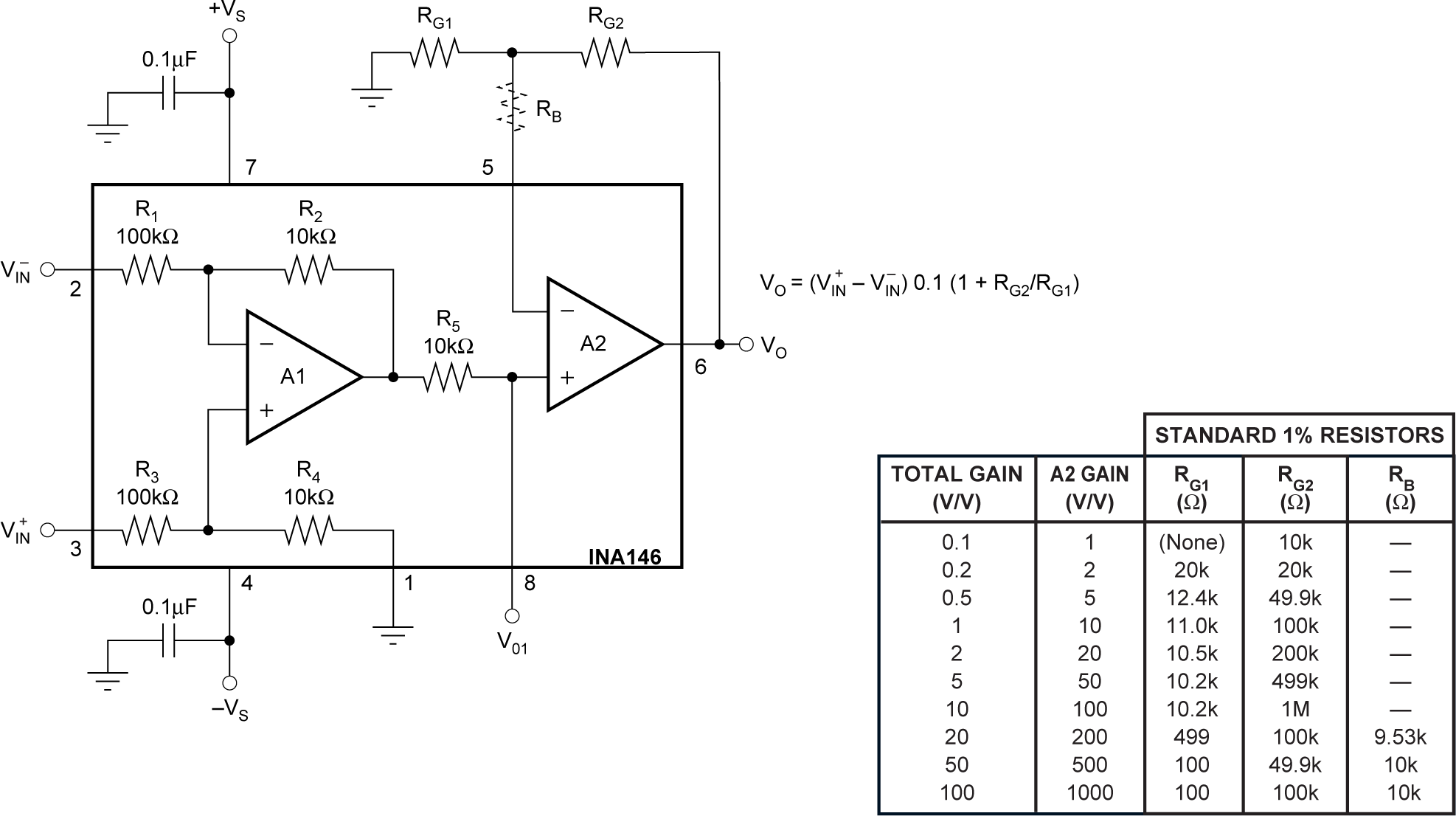SBOS109A September 1999 – November 2023 INA146
PRODUCTION DATA
- 1
- 1Features
- 2Applications
- 3Description
- 4Pin Configuration and Functions
- 5Specifications
- 6Application and Implementation
- 7Device and Documentation Support
- 8Revision History
- 9Mechanical, Packaging, and Orderable Information
Package Options
Mechanical Data (Package|Pins)
- D|8
Thermal pad, mechanical data (Package|Pins)
Orderable Information
6.1.3 Common-mode Range
The 10:1 input resistor ratio of the INA146 provides an input common-mode range that can extend well beyond the power supply rails. Exact range depends on the power supply voltage and the voltage applied to the Ref terminal (pin 1). For proper operation, the voltage at the non-inverting input of A1 (an internal node) must be within the linear operating range. The voltage is determined by the simple 10:1 voltage divider between pin 3 and pin 1. This voltage must be between V– and (V+) – 1 V.
 Figure 6-1 Basic Circuit Connections
Figure 6-1 Basic Circuit Connections